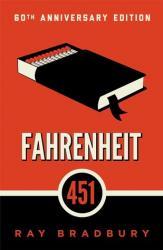
Fahrenheit 451 is a classic book that most people have heard the title of. With a similar style to Aldous Huxley’s “Brave New World”, Fahrenheit 451 takes the reader into a future where books are outlawed and the people of this alternate future are basically mindless robots. The people of this future have an intake of mindless media that even surpasses that of us currently. The main character is a firefighter but different from what we are used to. These firefighters fight with fire, burning houses and books if they are found since they are against the law. But soon after meeting a girl who does not conform to this society’s media consumption, the main character begins to rebel and go against the norm. Fahrenheit 451 is a spooky prediction of what the future will hold and after reading it, I can already see us as a society heading on this path. A truly incredible read, Fahrenheit 451 is a novel that cannot be missed.
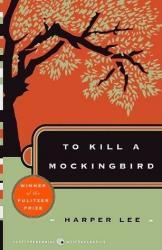
To Kill a Mockingbird is truly a masterpiece of American literature.
Along the lines of Tom Sawyer and Huckleberry Finn, Harper Lee presents us with a coming of age story set in 1930s Alabama. Scout and Jem Finch explore their hometown, get into trouble, wonder about the mystery of Boo Radley, and are faced with a great challenge when their father must prove a man to be innocent. Atticus Finch, Scout and Jem's father, is a wholehearted, unprejudiced role model who always stands up for what is right and who anyone can learn a lesson from. Overall, I understand why many schools require their students to read this book as it is wonderful literature for all generations.

You are slowly floating down river on a warm summer night. You have no worries as you gaze at the endless stars above you. You had a simple day; catching fish to eat and lazily laying in the sun as you float wherever the river takes you. This is the life of Huckleberry Finn.
I gave this book three out of five stars because it was good however it wasn't good enough for me to consider it one of my favorite books. I appreciated the multiple conflicts, the complexity of having several conflicts at once made the book interesting. The characters were all well developed even side characters had underlying intents, and backgrounds.
Additionally, the relationships between the characters was engaging, I especially enjoyed the dynamic between Huck and Jim. Finally, I really enjoyed the internal conflict of Huck as he traveled with a slave. Huck's moral conflict from a society being raised in a society that supports slavery was striking as a 21st century teenager. Despite the positive elements of "The Adventures of Huckleberry Finn" it is only pretty good because I couldn't relate to the characters and the book lacked an emotional connection that would make it one of my favorite books. Regardless, you should read this book for to develop an understanding of the culture of the past.
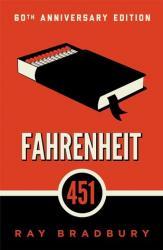
I originally purchased Fahrenheit 451 because it was an option on a summer reading assignment; the book seemed interesting based on the description but it wasn’t a book I would normally pick up. Fahrenheit 451 takes place in a world where firefighters no longer put on fires but burn books. Guy Montag is one of these firefighters though he has never really considered why he became firefighter or why books are burned. On his usual way home Guy meets Clarisse, a young neighbor, who is curious about why thing are how they are.
Clarisse asks Guy why he became firefighter and if he has read a book. While at first Guy finds Clarisse’s curiosity foolish, he begins to realize he had been a the fool all along. This book has been eye opening, I have never thought about the subtle censoring in books, and the way many things are mindless, pointless, and short. While with many books are so action packed you can’t put them down, this is not the case with Fahrenheit 451. With this book I was able to slow down, imagining everything detail, and just think about the theme. This book is a classic for a reason, the message is meaningful. The events that created the setting of Fahrenheit 451 seemed a little too relatable, and it really got me thinking about censoring in our society. This on the shorter side and it is definitely worth your time.
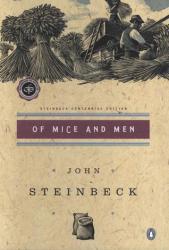
The short novel Of Mice and Men by well-regraded author John Steinbeck is heralded as a classic for a reason. The book tells the story of George and Lennie, two migrant workers trying to make a living farming in California during the 1930s Great Depression. George and Lennie are not related; they are friends who travel together to find work. Throughout the novel, they encounter new relationships and people on a new ranch. There is no denying that Steinbeck was an incredibly strong author, capable of painting a rich portrait of life in such a harrowing time of hardships; however, the sad and frankly unnecessary ending of this novel took away from my liking of it, in addition to the frank descriptions of mistreatment of people and animals, combined with the elongated plot contributed to the fact that this wasn’t a book I enjoyed. Readers need to be aware that this is a very difficult book to read, combined with mistreatment of a character with mental illness, women, and animals. Some may enjoy this novel because of the vivid descriptions and powerful characters, however, in my opinion, this book was horribly sad and not something I would not read again.
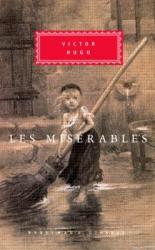
Jean Valjean has been in prison for 19 years. On the day he is freed, he walks to the city of Digne, which is over thirty miles away. Exhausted, he searches for food and shelter, but is rejected at each place he goes to because he was a former convict. Finally he is told to ask the Bishop of Digne for help. The Bishop agrees without hesitation. Valjean wakes up early in the morning and steals the Bishop's silverware. He is caught and brought back to the Bishop, but the Bishop saves Valjean from returning to prison by pretending that the silverware was actually a gift. He even gives Valjean silver candlesticks as well. The Bishop convinces Valjean to turn around his life.
Exceptionally strong character development was a highlight for me. Some themes in this classic are sacrifice for others and unexpected generosity; for example, Valjean has an opportunity to shoot his worst enemy, but instead decides to free him. The plot also weaves the connections between characters magnificently. This book has made me experience emotions more strongly than any other book I've read.
Les Miserables is a relatively long novel; Victor Hugo (the author) is willing to become verbose frequently. I actually enjoyed its details, which made me more immersed in the story. If you don't usually read books with philosophy, it may take a little getting used to. Even if you have already watched the play, the book is still worth considering; there is plenty of extra material in the book that the play skips.
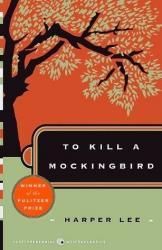
To Kill a Mockingbird, by Harper Lee, is a fantastic novel that examines the racism present in the South during the Great Depression. The book includes several remarkable instances of justice being served to the widespread prejudice present, which captures the reader. All of the character are well developed and serve well in their roles, especially the main protagonist. The entire setting is also intriguing and forms a solid foundation for the plot. Overall, I would recommend this book to anyone as it is a fascinating tale about Southern life.
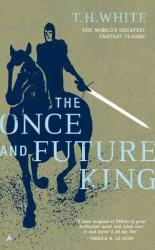
The Once and Future King, by T. H. White, is a great fantasy classic that is a retelling of the saga of King Arthur. The novel is stuffed with a mix of wonderful emotions that blend together to make a very unique fantasy story. The characters are all developed very well, especially the protagonist, and the plot fits them very well. The book has some very sorrowful scenes, but does a fantastic job of spacing them out with its humor. The only downside to the book is that it is for high-level readers.
If the story was put into a bit simpler language, it would relate to more people and reduce the amount of strain placed on the readers' mind while trying to interpret it. Overall, The Once and Future King is a great fantasy novel, but its use of complicated language takes away from the world it creates.
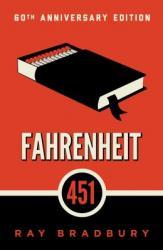
Guy Montag, a fireman who lives in the future where all books are banned, is required to burn them all. Guy then meets a strange girl who explains how books aren't so bad. He begins to spend more time with her and as more fire calls end up worse and worse, his point of view on books is eventually changed. Guy becomes a rebel to the fire company, as he tries to stand up to what is right. He later meets with an ex-professor who helps him generate a plan. Will he succeed? Read this book to find out. I would recommend this to anyone who wants to read about an alternate point of view on the future and readers who like technology as well as robots.
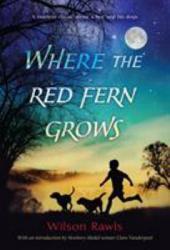
A boy named Billy lives in the foothills of the Ozarks in southern Missouri. He gets dog fever when he is ten. He begs his parents for a pair of hunting dogs. This goes on for about six months. Then his parents give him three steel traps. This entertains him for a while but then his hunger for dogs is stronger than ever. He works his tail off saving money to buy dogs himself. Let Billy take on a wild adventure of coons, dogs, and love. I read this book because I loved how close Little Ann, Old Dan, and Billy were. I liked it because it slows down the story and really explains it. If you are going to read this book I would recommend that you have the Internet handy. The talk that they use is slightly difficult to understand, but immerses you into that time period.
Major Themes
Adventure
Love
If you love the outdoors and are a dog person I would recommend this book for you.
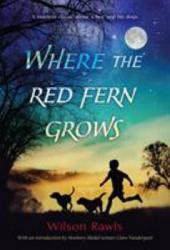
I loved Where The Red Fern Grows. It is a great book and it is a story about a boy and his two dogs. After you read this book, I think you will be reading it again soon after! It just shows that his dogs will do anything for their owner through kindness and loyalty.
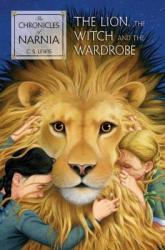
When 4 british school children are sent away during World War II to a old professers home the have no idea what adventures are there. The children find a wardrobe in a room of the house and enter it where they find themselves in a magic land called Narnia. This book is full of adventure and is a good read for people of all ages.
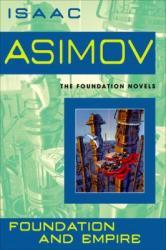
One of my qualms with the start of Isaac Asimov’s Foundation series was how different the stories were from each other. Each was set in the same universe but failed to have much of a cohesive narrative that tied them all together. While Foundation covered five different short stories, its sequel, Foundation and Empire managed to whittle this method of storytelling down to twonovellas. The result was a clear improvement in clarity and focus as each half of this book only covered a single plot each.
In Foundation and Empire, I finally was able to read a story that stuck with me in this series. Up until this point, I probably couldn’t tell you the premise of any of the short stories in Foundation, let alone the plot of the first half of this book. However, once this book transitioned over from topics that were more in line with science into ones that had a more fictional bend, I found the narrative to be much more enjoyable. It’s almost a shame that the whole book wasn’t an exploration of the universe presented in the second half.
Even if it took a book and a half for me to warm up to this series, I could honestly say that “The Mule” piqued my interest and will likely contribute to my continued reading of the Foundation series. This was probably because this particular half of the book introduced a clear antagonist to the story. It’s not that other stories in the series up until now didn’t have antagonists, it’s more that they weren’t an individual villain up until now. Now things are getting interesting!
A natural evolution of Foundation and an improvement on its predecessor, I give Foundation and Empire 3.5 stars out of 5.
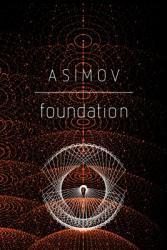
For years, people have asked whether or not I have read the penultimate science fiction series that is Isaac Asimov’s Foundation. Up until now, I could not say that I had. While I knew the series by its name, I hadn’t ever heard any comparisons or even knew what these books were about. This probably should have been my first indication of what to expect. I wasn’t expecting anything other than its notable status as a pillar of classic sci-fi. If anything, the fact each “section” of Foundation is its own short story says volumes about the origin of the genre.
Set within the same universe, Foundation follows five different groups across the timespan of a couple hundred years. Asimov explored a few different concepts and spent most of this book in world-building mode. I’ll applaud his ability to remain fairly consistent across these different stories, but the fact that there isn’t much that ties them together is the main issue I have with this book. Because they’re mostly five separate short stories, there’s not too much “action and consequence” between the different sections. This is what I would expect from a book with a standard three-act structure plot.
Additionally, I think the science fiction stories I tend to enjoy lean more on the “space opera” side than where Foundation lies. The fact that Foundation dives so deep into heady—and often controversial—topics like religion, politics, and economics is probably what lost my interest. Sure, there are some neat applications of technology that drives these topics. However, since it felt more like an academic lecture instead of an entertaining read, I glossed over a lot of the details. Maybe the other books in the series remedy this but for Foundation I just kind of felt “meh” about it.
An OK start to a highly-lauded science fiction series, I give Foundation 3.0 stars out of 5.
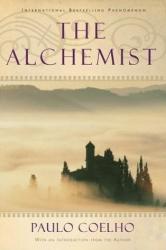
The Alchemist is the story of Santiago, a shepherd boy, who goes on a journey to find treasure he saw in a dream. It is a story of philosophy and self-discovery, and its open-ended style leaves a lot of room for interpretation. That is the beauty of this book; every reader will get something different out of it. I found The Alchemist to be very inspirational and calming, as well as immensely interesting. This quick read is great food for the soul.
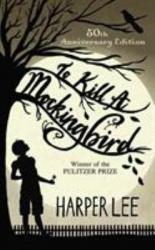
To Kill a Mockingbird is a well thought out, very deep and well executed book. Although it contains some very strong language, I'd say this is a must read for any teenager. Set during the time of the depression, this book deals with many political issues such as racism while also managing to teach very important lessons along the way. The complicated sentence structure in the book, as well as the vocabulary serve to make it a very fun and chalenging read. In my opinion this book is truly one of the best written in history.
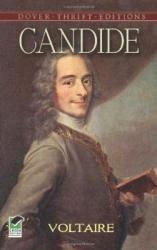
Candide by Voltaire is an interesting book about a man who believes everything that happens will be for the good of man (perverted optimism) even though he is faced with incredible suffering. I read Candide with my European Literature class and I found it a very good book to demonstrate perverted optimism and satire. Voltaire uses satire as an effective device to show the horrors of the world at his time. While Candide is mostly based in truth, it has many fictional ideas such as a country called Westphalia and the mythical El Dorado. Overall, I really enjoyed this book even though it is very weird, it still had an interesting use of language and story line.
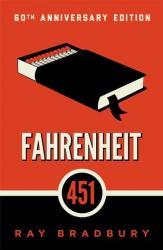
With this dystopian society reversing positions in society, firefighters burn books and light houses on fire. Montag, a veteran firefighter, soon meets a girl who changes his mind about life, books, and his job. Soon, this mystery girl disappears and Montag soon sets out on a risky adventure to solve the mystery of his lost friend. With him betraying society, reading intriguing literature, and meeting new friends, the society is out to find Montag. Will he escape into the unknown world or will he be caught with his fate unknown? This book is an adventure worth reading!
Reviewer Grade: 9th

The book, The Lion, The Witch, and The Wardrobe, by C. S. Lewis, is a wonderful read. The classic can be read by any ages and provides a fulfilling story in a fantastical world. The straightforward plot and character development also add nicely to the book's universe. The book also provides illustrations adding to the imagery of Narnia, the world in which the book is in. Overall, The Lion, The Witch, and The Wardrobe is a phenomenal book that can give any reader a great experience.
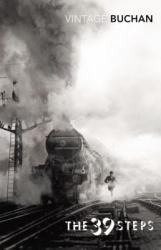
It’s weird to think that stories like The 39 Steps have only been around for 100 years. Perhaps their ubiquity in modern action thrillers has made me numb to their “man on the run” plotline, but I didn’t find this book to be as interesting as I had expected. Sure, it’s short, but how many of its twists and turns were merely repeating the same way of escaping the main character’s pursuers time and again? And perhaps that’s the main issue I have with this book: the main character seemed to be too skilled at eluding capture for it to be believable.
I know the “wrong man” trope that thrusts an ordinary person into these kinds of circumstances isn’t as realistic as it could be, but when Richard Hannay just happens to know exactly what to do at each instance, I wonder how “ordinary” he really is. Don’t get me wrong, the chase is exciting, it’s just oddly convenient for the protagonist. Of course, maybe I was already ruined by having seen Alfred Hitchcock’s version of this story in The 39 Steps (1935), which added in elements of romance and changed some key plot points.
In the end, The 39 Steps still stands as one of the originators of its genre. Even if the style has morphed and evolved over time, it’s essential to recognize where it came from and what its early influences were. If you’re interested in the history associated with the genre, then this book for you. Heck, if you have a few hours to kill in an airport or waiting room, this book might be the ticket. Just don’t expect much out of it other than some slightly-entertaining distraction.
A basic, if perhaps unbelievable story, in the early action-thriller genre, I give The 39 Steps 3.0 stars out of 5.


